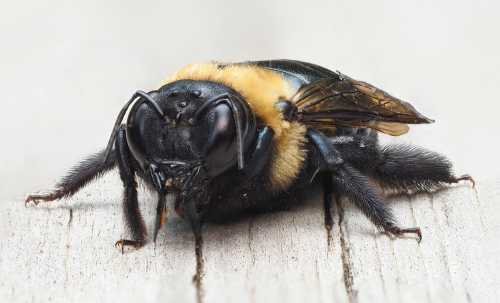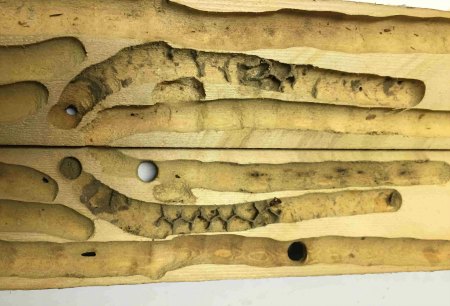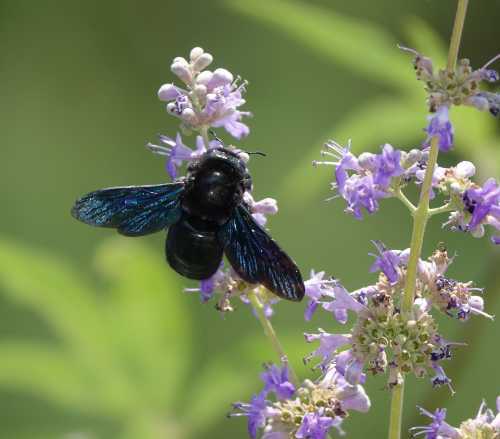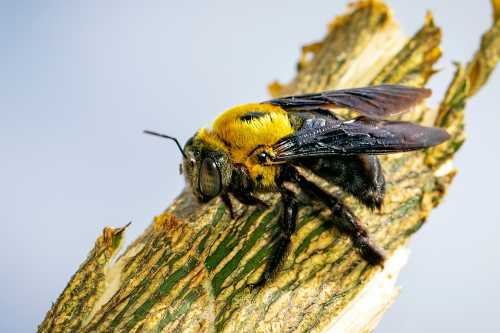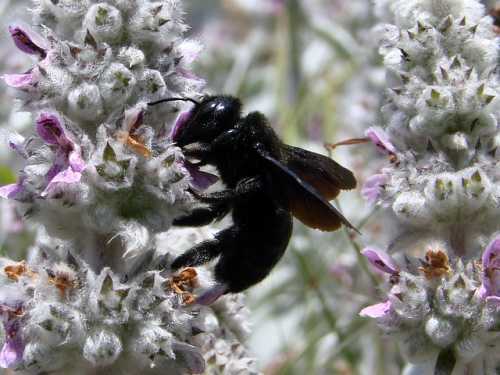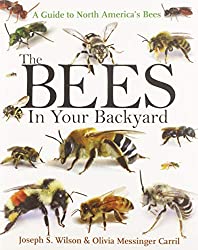What's This Carpenter Bee With A White Face?
Question:
What kind of carpenter bee has a white face?
The short answer is:
A male eastern carpenter bee. Take a look at the photograph for confirmation, and read on for further detail.
The Carpenter Bee With A White Face
If you have witnessed a carpenter bee flying toward you, perhaps hovering just for a few seconds, you may have observed that the bee had a distinctive white face. If the bee also has a very pale ginger thorax (upper body) and slightly shiny black abdomen, it's a male eastern carpenter bee.
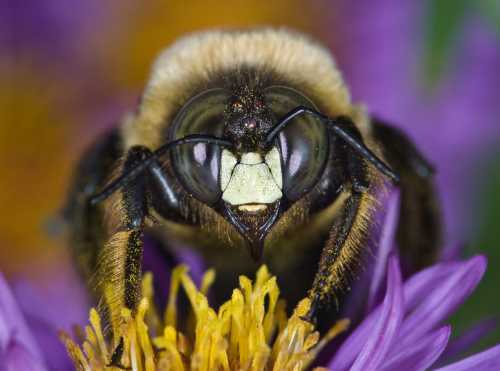 Male Eastern Carpenter Bee - Xylocopa virginica
Male Eastern Carpenter Bee - Xylocopa virginicaFacial features of an eastern carpenter bee.
If you are wondering what those facial features are called, here is the same image, with labels applied and further explanation below.
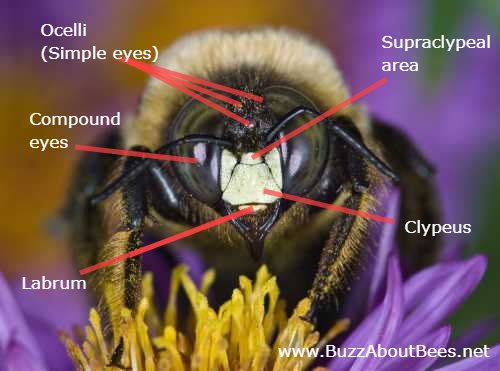
Ocelli and compound eyes
All bees have five eyes. At the top of the head are three small, shiny eyes, called ocelli. At the side of the head, and performing a slightly different function, are the large eyes - the compound eyes. Learn more about bee eyes.
Clypeus and supraclypeal area
The large white central 'plate' on the front of the face, is called a clypeus1, and is a feature present on all insects (and indeed, a feature which can help entomologists distinguish between species, including bees and beetles).
In other bee species, the clypeus can feature a tuft of hair that might assist in the collection of pollen.
Notably, the male eastern carpenter bee lacks hair on the clypeus. Females are, however, good pollinators and are known for their ability to buzz pollinate. The supraclypeal area is the region of the head between the antennal sockets and clypeus.
Labrum
The labrum is a hinged upper lip attached to the clypeus. Its function may vary according to bee species, but it is believed to be linked to sensation and feeding2.
Read more about carpenter bees
Male vs female carpenter bee
Differences to look out for among various commonly-seen species .
Inside a carpenter bee nest in wood
Ever wondered what the insides of a carpenter bee nest look like?
About carpenter bees
Their lifecycles, lifespan, habitat and so on.
Can carpenter bees sting?
Females can, but carpenter bees are not aggressive
Carpenter bees and buzz pollination
Exploring the value and potential of carpenter bees as pollinators
References
1 Bumble Bees of North America, Princeton University Press. 2014. Williams P.H., Thorp R.W., Richardson L., & Colla, S.
2. Orr MC, Tripodi AD (2017) Stiff upper lip: Labrum deformity and functionality in bees (Hymenoptera, Apoidea). Journal of Hymenoptera Research 57: 89-101. https://doi.org/10.3897/jhr.57.12510
